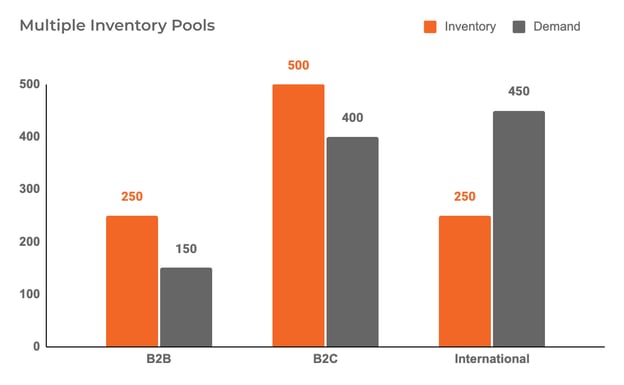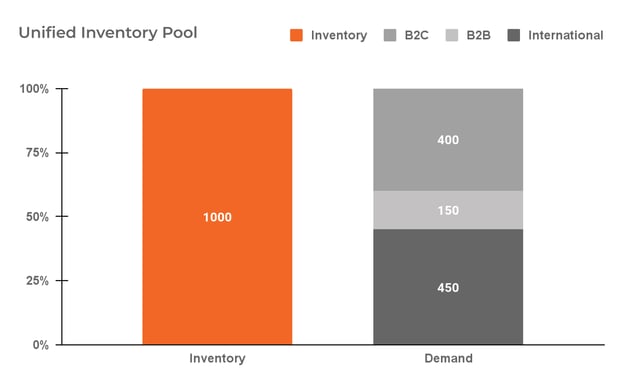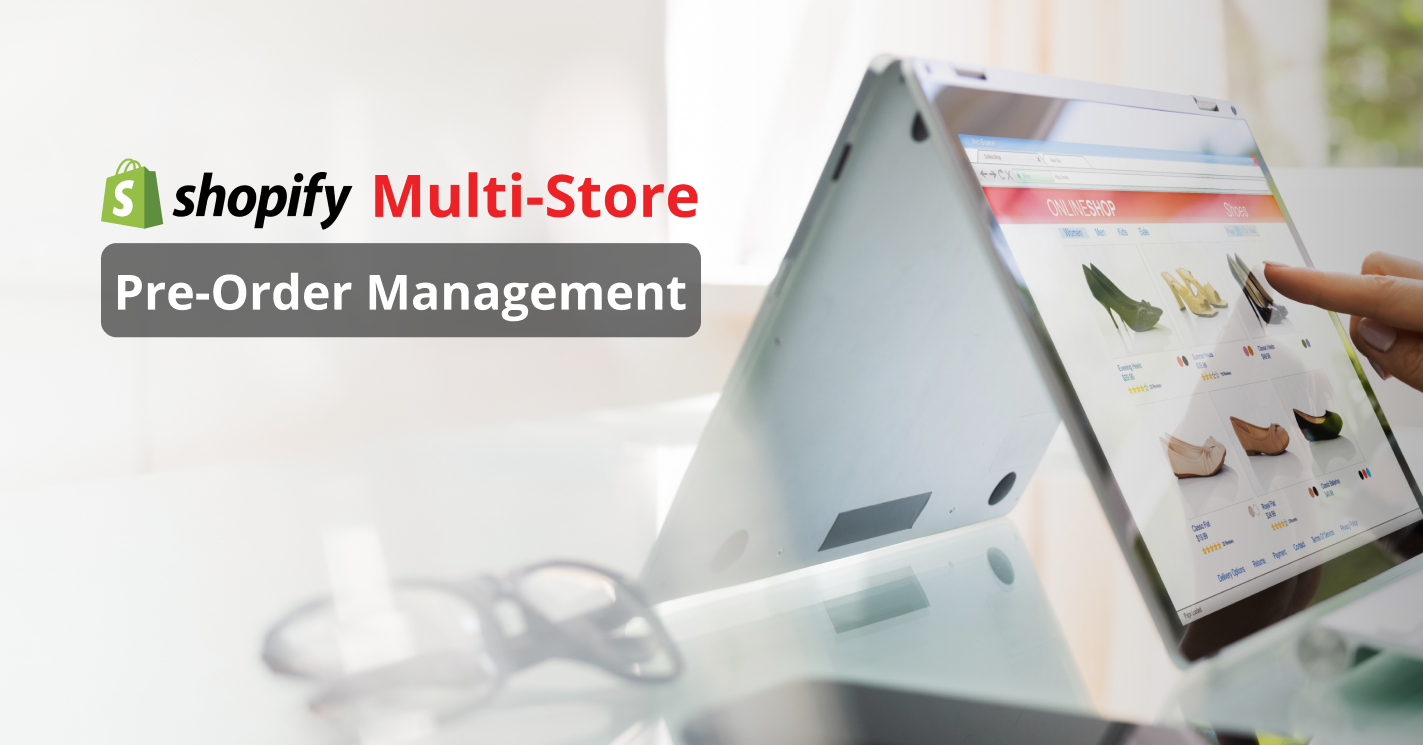Nowadays, an increasing number of Shopify retailers are utilizing Pre-Order strategies to monetize their on-order inventory. By using Pre-Orders, retailers can offer customers early access to products that will soon be released, while also boosting profitability, building customer loyalty, and improving demand forecasting accuracy.
Despite its benefits, manually managing Pre-Orders can do more harm than good, often leading to errors while also taking up valuable employee time. Manually handling Pre-Orders also requires retailers to actively keep track of the number of sales, orders received, and the remaining on-order inventory to avoid underselling and overselling. Moreover, if Shopify retailers wish to expand to multiple stores, manual Pre-Order management will inevitably restrict growth opportunities and complicate overall inventory management.
In situations where a Shopify retailer has an Order Management System that supports Pre-Orders but also has more than one Shopify store, the retailer must implement a separate Pre-Order management solution for each business unit.
This results in maintaining multiple inventory pools for the same Pre-Order catalog, which can be a resource-intensive task, requiring significant time and effort to manage.
However, there is a solution to this problem that simplifies the Pre-Order process for Shopify retailers with multiple stores. In this blog, we will discuss the challenges faced by Shopify retailers in managing Pre-Orders for multiple Shopify stores and how retailers can use a single Pre-Order management platform to automate their Pre-Order workflows and easily scale their operations.
Challenges associated with implementing the Pre-Order Solution for Multiple Shopify Stores
Many Shopify retailers begin their online businesses with a single Shopify store and later expand by launching new B2B and B2C businesses or even international sites. However, many Shopify retailers soon find themselves in a difficult position when dealing with the intricacies of managing Pre-Orders in multiple Shopify stores. Let’s take a close look at the common challenges Shopify retailers managing multiple stores encounter:
1. Managing Pre-Orders across Multiple Shopify Stores manually
Shopify allows retailers to sell their products even if they do not have any in-stock inventory. However, for each product variant, the Inventory Policy "continue selling when out of stock" must be manually enabled in Shopify. When a product has received enough sales orders, the Inventory Policy must be disabled to prevent receiving any additional orders.
When the Pre-Order catalog contains an extensive product assortment, manually updating the Inventory Policy becomes tedious. Additionally, in case of multiple Shopify stores, to allow Pre-Orders, retailers need to update the Inventory Policy for each product variant in each individual Shopify store, which quickly becomes disorienting and can lead to errors. Failure to enable or disable these Inventory Policies in a timely manner may lead to underselling or overselling, both of which ultimately harm the Shopify retailer’s ecosystem.
Let’s take a look at an example:
A retailer has three Shopify stores: one for each of their B2B and B2C businesses and a third for their international market. Now, if the retailer wants to sell their single Pre-Order catalog with more than 1,000 products across all three Shopify stores, manually tracking the sales orders received in each store and updating each individual Inventory Policy seems to be nearly impossible. The Shopify retailer is very likely to oversell if they do not disable the Inventory Policy for a product variant in any of their stores in a timely manner.
Further, customers who place Pre-Orders expect them to be delivered as per the promised schedule. But, when Shopify retailers receive orders more than the available Pre-Order inventory, they are required to cancel the customers' orders. Order cancellations not only create a negative customer experience, but they also diminish the retailer’s profit margins.
2. Managing Pre-Orders across Multiple Shopify Stores with the existing Pre-Order Management Solution
Shopify retailers who wish to expand their business by selling their existing Pre-Order catalog on a new Shopify store will be unable to do so unless they implement a separate Pre-Order management solution for each of their business units.
Most Pre-Order Management solutions are only designed to connect with one Shopify store, making it incompatible with syncing a single Pre-Order catalog and a unified pool of inventory with multiple Shopify stores. If the retailer has multiple Shopify stores and wants to sync a single Pre-Order catalog across all of them, they will need to create multiple siloed inventory pools for the same product in each store, divided out from the total on-order inventory. However, maintaining a separate inventory pool for every product in each Shopify store while also ensuring inventory synchronization can become a hassle for the retailers with multiple business units.
.png?width=860&height=462&name=Pre-Order%20Management%20without%20HotWax%20(1).png)
Fig 1: Multiple Pre-Order Management Systems and Siloed Inventory Pool for each Shopify store
Another major issue with integrating multiple Pre-Order Management solutions is that Shopify retailers distribute their Pre-Order inventory based on the expected sales from each business unit. As a result, there is an increased risk of losing potential sales when the inventory allocations are not made in accurate proportions.
Let’s take a look at another example:
A Shopify retailer's Pre-Order catalog has a product with 1,000 on-order inventory, and the retailer has allocated inventory across three business units based on assumptions.

Fig 2: Siloed Inventory Pool for each Shopify Store

The Pre-Order product will be displayed as out-of-stock at the locations where all orders are received on the allocated inventory, even if some inventory is available at other locations.
As a result, when more inventory is allocated in areas where sales volume is low and less inventory is allocated in areas where inventory is actually needed, Shopify retailers lose both sales and revenue. There is also the possibility that the excess inventory will be left unsold, pushing retailers to offer markdowns on their products, further reducing their margins.
How can Shopify retailers manage Pre-Orders in Multiple Shopify Stores?
Managing multiple Shopify stores is difficult, but there are some ways to make it easier:
-
Automated listing and delisting of Pre-Order products: Shopify retailers must implement a Pre-Order Management solution that automatically identifies the Pre-Order products and enables Inventory Policy to “continue selling when out of stock.” They also need to be able to disable the Inventory Policy when sufficient orders are received. Pre-Order Management solutions automate this process, and when sufficient orders are received, the Inventory Policy will be automatically disabled.
The automated listing and delisting of Pre-Order products across multiple Shopify stores will allow accurate management of the Pre-Order catalog, even for large product assortments, helping Shopify retailers prevent overselling and underselling. -
Managing a unified pool of inventory: The Pre-Order management solution must be capable of syncing a single Pre-Order catalog with multiple Shopify stores. Instead of manually allocating inventory for each Shopify store, the presence of one unified inventory pool helps Shopify retailers make the best use of their Pre-Order inventory.
When new orders are received in any Shopify store, inventory will be deducted from the total aggregated inventory count. Therefore, maintaining a common pool of inventory for all the Shopify stores will also ensure that Shopify retailers are not underselling their Pre-Order inventory.

Fig 3: Unified Inventory Pool for all Shopify Stores
How HotWax Commerce helps Shopify retailers manage Pre-Orders in Multiple Shopify Stores
HotWax Commerce Order Management System offers Pre-Order Management capabilities that perfectly fit for retailers with multiple Shopify stores. By making HotWax Commerce the “actual source of truth for Pre-Order catalog and Pre-Order inventory availability,” Shopify retailers can ensure end-to-end management of Pre-Orders across all their Shopify stores.
The Pre-Order Management System automatically identifies Pre-Order products and lists them across all Shopify stores. When a Pre-Order inventory is sold in a Shopify store, the inventory is automatically deducted from the unified inventory pool, resulting in inventory reduction for all other stores as well. Moreover, when orders are captured on the entire pool of inventory, indicating that the Pre-Order product is out-of-stock, the Pre-Order products are automatically delisted across all Shopify stores.
Making the inventory count collectively available for all Shopify stores also ensures that customers don’t see a product as “sold out” even when inventory is available to promise. This allows Shopify retailers to secure more conversions and higher returns on their inventory.
.png?width=860&height=414&name=Pre-Order%20Management%20with%20HotWax%20(1).png) Fig 4: Single Pre-Order Management System and Unified Inventory Pool for all Shopify Stores
Fig 4: Single Pre-Order Management System and Unified Inventory Pool for all Shopify Stores
Additionally, with the HotWax Commerce Pre-Order Management System retailers launching their new Shopify stores can also bulk push their existing Pre-Order catalog and quickly start selling without any hassle.
* * *
If you are interested in learning more about how our omnichannel solutions can take your business to the next level, contact the HotWax Commerce team for a free consultation today.









